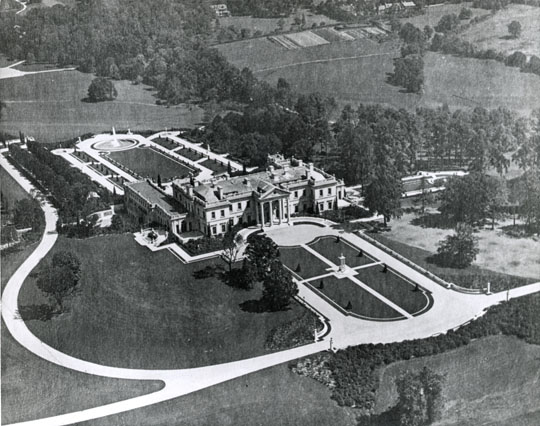
The Stotesbury Regatta—the largest high school regatta in the world— is coming around (Friday and Saturday) as it does every year. And it’s time again to inform the thousands of young rowers and their families that there was a real person named Stotesbury. Not only that, he was famous in his time.
Until his death in 1938, Edward T. Stotesbury was one of Philadelphia’s wealthiest and most accomplished men. He had had a huge career, as senior partner of the banking firms Drexel & Co. and J.P. Morgan. He was civic minded and served as president of the Fairmount Park Commission for 26 years. He owned a 100,000 square foot mansion in Philadelphia’s northern suburbs dubbed the “Versailles of Ameria.” Whitemarsh Hall had 147 rooms and 28 bathrooms not to mention 300 acres of land cared for by some 70 gardeners. (It’s now gone but for the gates that remind on a condo complex).

Stotesbury was also a big joiner of clubs, which is what society folks did back in the day. One club he joined at the age of 38 and belonged to until his death was the Bachelors Barge Club, though it’s not believed he was a rower. It was just a prestigious club to be part of and he probably liked the camaraderie of other members with names like Clothier, Burpee, and Wyeth.
By the 1920s, great rowers were emerging on Boathouse Row who were dominating world rowing (including John B. Kelly Sr. and Paul Costello). Stotesbury’s clubmate, Garrett Gilmore had won the silver single sculls medal in the 1924 Olympics, and like Kelly, he wanted to encourage youth rowing so Philadelphia could maintain its global clout.
So in 1927 he turned to the wealthy Stotesbury, then age 78, to donate a cup for a single “school boys” race.
Nowhere in his obituary in 1938 was it mentioned that he was a member of Bachelors and president of the club at the time of his death. Nor that he’d given a sliver cup for a high school regatta.
It is one of the ironies of history that this small gesture is the only thing for which this Philaldephian, so famous in his time, is remembered for today.